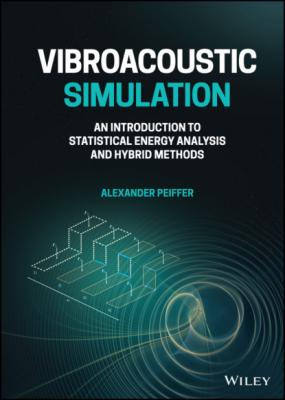Vibroacoustic Simulation. Alexander Peiffer
Чтение книги онлайн.
Читать онлайн книгу Vibroacoustic Simulation - Alexander Peiffer страница 29

using that Rff(τ) is symmetric in τ. This equation can be converted into frequency domain using the fact that time reversal in time corresponds to complex conjugate spectra:
So we know now the autospectrum of the system excited by random response. Next we investigate the cross correlation between input and output.
This expression can be simplified by assuming the expected value to be the auto-convolution with argument τ−τ1 to:
Converting this into the frequency domain gives:
This is a very important result: every transfer function (also using deterministic signals) can be determined by the ratio of the cross spectrum to auto spectrum.
In principle this can also be done by using the Fourier transform (1.173), using time-limited excitation and dividing output and input FT, but the cross spectral variant is much more robust against measurement noise.
1.7 Multiple-input–multiple-output Systems
Mechanical set-ups with multiple degrees of freedom are multiple-input–multiple-output (MIMO) systems. The frequency response is determined by matrix inversion or solution of the matrix as shown in Equation (1.83)
In a more general form a MIMO system is defined as a system with N input signals fn(t) and M output signals gm(t).
Figure 1.24 Multiple-input–multiple-output (MIMO) system. Source: Alexander Peiffer.
The linear system function is described by M × N functions Hmn(ω) in frequency domain or hmn(τ) in time domain. The response of the mth output channel in time domain is given by
In the frequency domain, in the response at output m the convolution is replaced by multiplication
Both